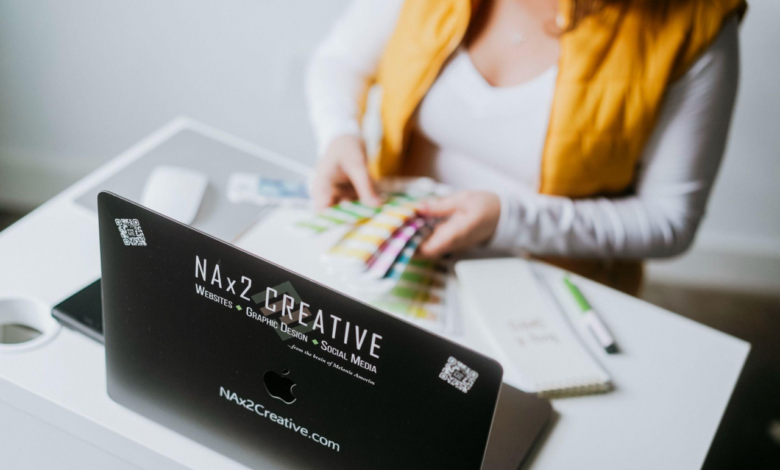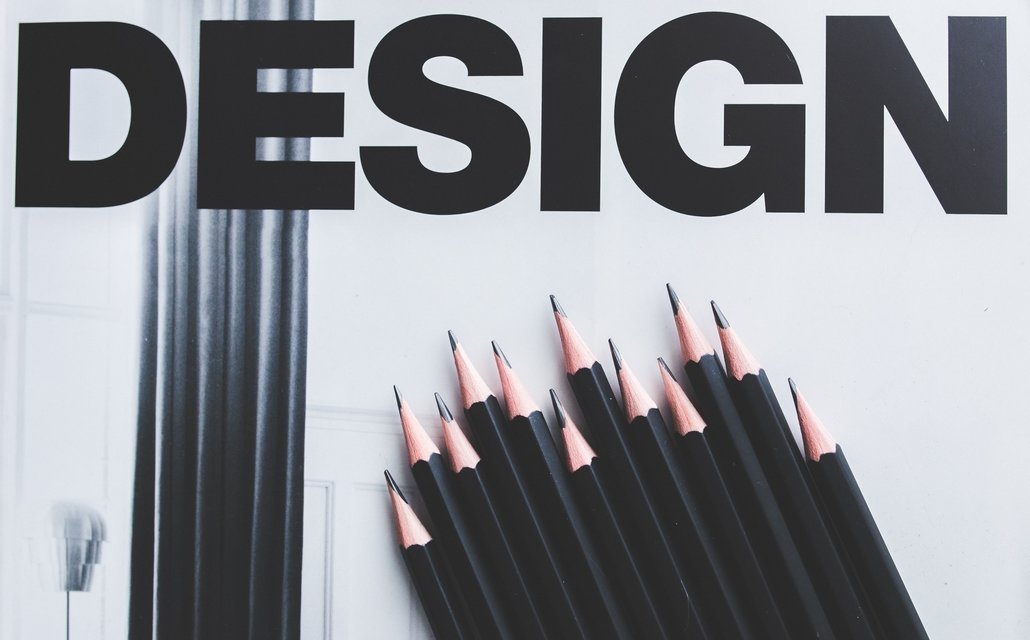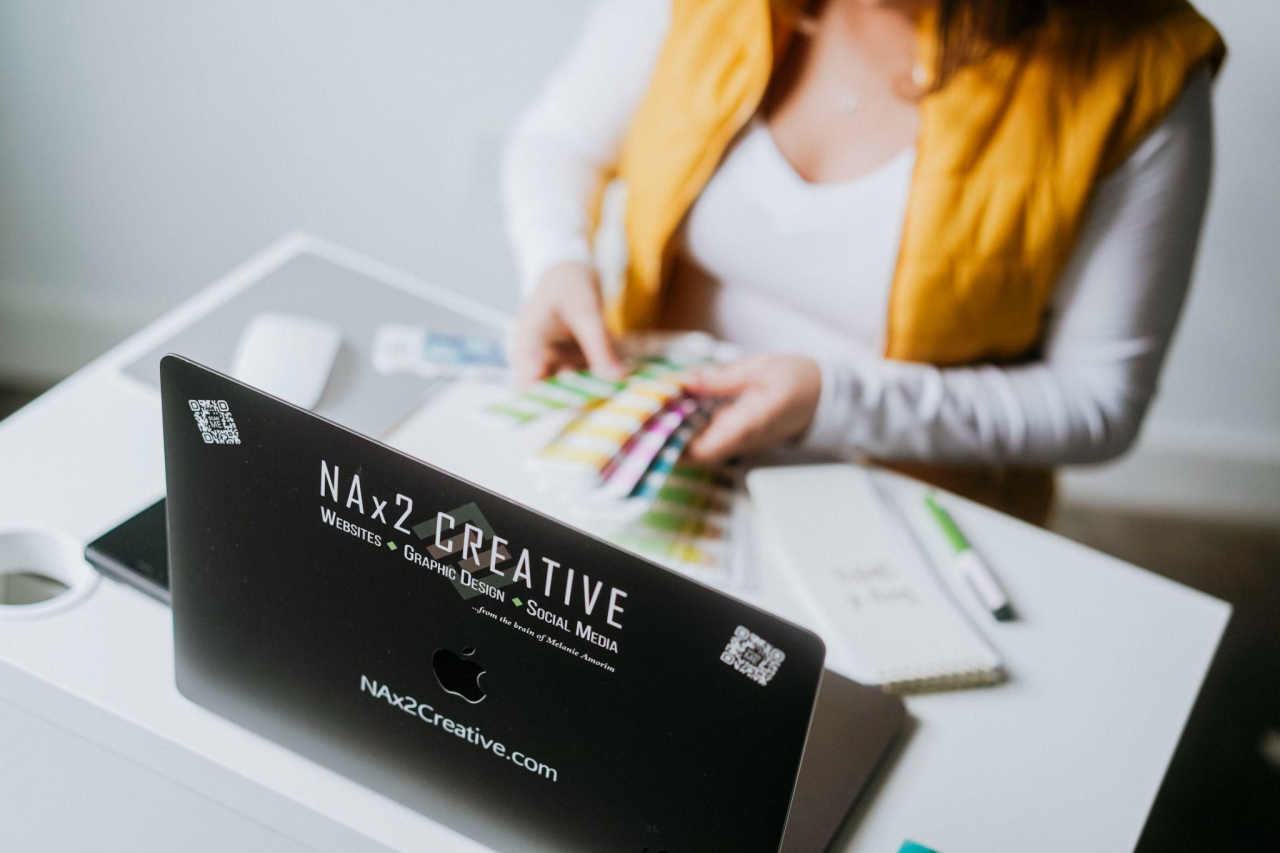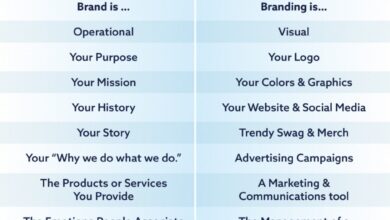
Ten Ways a Graphic Designer Can Transform Your Business
Ten Ways a Graphic Designer Can Transform Your Business – that’s the powerful promise I’m exploring today. We all know a strong visual identity is key, but how exactly does a graphic designer weave that magic? From crafting a logo that screams your brand’s values to designing a website that converts visitors into customers, the impact is far-reaching.
Get ready to discover the ten game-changing ways a skilled designer can elevate your business to the next level, boosting your brand recognition, customer engagement, and ultimately, your bottom line.
This isn’t just about pretty pictures; it’s about strategic visual communication. We’ll delve into how a designer can create a cohesive brand identity across all platforms, from your social media presence to your printed materials. We’ll look at the power of compelling visuals in marketing, the importance of user experience in website design, and even the subtle yet significant role of packaging design.
By the end, you’ll have a clear understanding of the transformative power of graphic design for your business success.
Enhancing Brand Identity

Source: printuk.com
A strong brand identity is the cornerstone of a successful business. It’s what sets you apart from the competition, builds customer loyalty, and ultimately drives sales. A graphic designer plays a crucial role in crafting and implementing this identity, ensuring your brand resonates with your target audience and communicates your unique value proposition effectively. This involves more than just a pretty logo; it’s about creating a cohesive visual language that extends across all aspects of your business.A well-defined brand identity is more than just aesthetics; it’s a strategic tool that shapes customer perception and influences purchasing decisions.
Consistent visual communication across all platforms fosters trust and recognition, making your brand more memorable and easier to identify. In today’s competitive market, a compelling brand identity is essential for standing out and achieving long-term success.
Logo Design for a Hypothetical Business
Let’s imagine a new company, “Evergreen Organics,” specializing in sustainable and ethically sourced coffee beans. Their core values are sustainability, quality, and community engagement. Their logo could be a stylized evergreen tree with coffee beans subtly integrated into the leaves. The font would be a clean, modern serif typeface, suggesting sophistication and reliability. The color palette would consist of earthy greens and browns, reflecting the natural origins of their product, with a touch of a warm, inviting orange to represent community and warmth.
This logo would immediately communicate the company’s commitment to environmental responsibility and high-quality coffee.
Mood Boards for a Fictional Company
Consider “NovaTech,” a fictional technology startup developing innovative software solutions. We can create three distinct mood boards to represent different brand personalities:
Mood Board 1: Modern & Minimalist
This board would feature clean lines, geometric shapes, and a predominantly monochrome color palette with accents of a vibrant blue. Imagery would include sleek technology devices, abstract patterns, and architectural details. The overall feeling is sophisticated, innovative, and trustworthy, appealing to a professional and discerning audience.
Mood Board 2: Energetic & Playful
This board would utilize bright, bold colors, dynamic imagery, and hand-drawn elements. The style would be less formal, incorporating illustrations, playful typography, and images representing creativity and collaboration. This approach targets a younger, more casual audience who appreciate a fun and approachable brand.
Mood Board 3: Sophisticated & Luxurious
This board would focus on high-quality photography, elegant typography, and a muted color palette featuring deep blues, golds, and blacks. The imagery would consist of high-end technology, architectural landscapes, and subtly textured backgrounds. This sophisticated aesthetic would appeal to a premium customer base valuing quality and exclusivity.
Consistent Brand Identity Across Platforms
Maintaining a consistent brand identity across all platforms—website, social media, print materials, and packaging—is paramount. Imagine the Evergreen Organics example: Their website would feature the logo prominently, utilize the same color palette and typography, and showcase high-quality images of their coffee beans and ethical sourcing practices. Their social media profiles would maintain the same visual style, using consistent filters and imagery.
Their packaging would reflect the same design elements, reinforcing the brand’s overall message and creating a unified customer experience. This consistency builds brand recognition, trust, and a strong sense of professionalism, significantly impacting customer perception and fostering brand loyalty.
Elevating Marketing Materials

Source: nax2creative.com
A strong visual identity is only half the battle. To truly resonate with your audience and drive conversions, your marketing materials need to be compelling, informative, and visually stunning. A skilled graphic designer can transform ordinary marketing collateral into powerful tools that elevate your brand and achieve your business objectives. They can take your existing materials and refine them, or create entirely new pieces tailored to specific campaigns.A graphic designer’s expertise in layout, typography, color theory, and image selection ensures your message is delivered clearly and memorably.
This goes beyond simply making things look pretty; it’s about strategically using design elements to maximize impact and guide the viewer’s eye. The result? Increased engagement, higher conversion rates, and a stronger overall brand presence.
Social Media Graphics for Product Launch
A well-planned series of social media graphics can generate significant buzz around a new product launch. For example, imagine launching a new line of artisanal coffee called “Morning Glory.” The design could involve a teaser campaign featuring a close-up of coffee beans with evocative text like “Something amazing is brewing…” This would be followed by an announcement graphic showcasing the product packaging and key features.
Finally, a behind-the-scenes graphic could show the coffee roasting process, highlighting the craftsmanship and quality. Each graphic would maintain a consistent brand aesthetic while catering to the specific message of each stage. The visual consistency strengthens brand recognition across all platforms.
Brochure Design for a Fictional Service
Consider a fictional service, “Zenith Productivity,” offering personalized time management coaching. A brochure for this service would use calming imagery – perhaps a minimalist depiction of a sunrise or a person peacefully working in a well-organized space. The text would be concise and benefit-driven, focusing on increased efficiency, reduced stress, and improved work-life balance. The use of clear headings, bullet points, and a visually appealing layout would make the information easy to digest and encourage potential clients to learn more.
Infographics for Complex Information
Infographics are exceptionally effective for simplifying complex information and making it easily digestible. Here are a few examples showcasing their effectiveness:
| Infographic Topic | Visual Elements | Target Audience | Effectiveness |
|---|---|---|---|
| Understanding Climate Change | Charts showing temperature trends, maps illustrating affected regions, icons representing various greenhouse gases. | General Public, Students | Simplifies complex scientific data into an easily understood format, raising awareness and promoting understanding. |
| The Lifecycle of a Product | Flowchart illustrating stages from design to disposal, icons representing manufacturing, distribution, and recycling. | Business Professionals, Supply Chain Managers | Provides a clear visual representation of a complex process, improving efficiency and communication within the supply chain. |
| Comparing Different Investment Options | Charts comparing returns, risks, and investment periods for different asset classes. | Investors, Financial Advisors | Facilitates quick comparison of investment options, allowing for informed decision-making. |
| Steps to Improve Website | Step-by-step process illustrated with icons and concise text, highlighting key aspects of . | Website Owners, Marketing Professionals | Provides a clear, actionable guide to improving website , increasing organic traffic and visibility. |
Improving Website Design & User Experience
A well-designed website is more than just a digital storefront; it’s the first impression your business makes on potential customers. A user-friendly website, optimized for ease of navigation and product discovery, significantly impacts conversion rates and overall brand perception. A poorly designed site, on the other hand, can lead to frustration, lost sales, and damage to your brand’s reputation.
Let’s explore how a graphic designer can transform your online presence.A graphic designer can analyze your existing website (or help create one from scratch) focusing on user experience (UX) best practices. This involves understanding user behavior, information architecture, and visual hierarchy to create a seamless and intuitive online experience.
Website Layout for E-commerce
Imagine an e-commerce store selling handcrafted jewelry. The homepage could feature a hero image showcasing a stunning necklace, immediately capturing attention. Below, a clear and concise navigation menu would allow users to easily browse categories (e.g., necklaces, earrings, bracelets). Product pages should display high-quality images from multiple angles, detailed descriptions, customer reviews, and clear sizing information. A prominent shopping cart icon and a simple checkout process are crucial for a smooth purchasing experience.
The overall layout should be clean, uncluttered, and visually appealing, with a consistent brand identity throughout. The use of white space effectively guides the user’s eye and prevents visual overload.
Responsive Website Design
Responsive design ensures your website adapts seamlessly to different screen sizes and devices (desktops, tablets, smartphones). This is crucial because users access websites from a variety of devices. A non-responsive website might appear cramped on a mobile phone or require excessive scrolling on a tablet, leading to a frustrating user experience. A responsive design automatically adjusts the layout, images, and text to fit the screen size, ensuring optimal readability and usability across all platforms.
For instance, a navigation menu might collapse into a hamburger icon on smaller screens, while images might resize proportionally to avoid distortion.
Effective Calls-to-Action (CTAs)
Calls-to-action are essential elements that guide users towards desired actions, such as making a purchase, subscribing to a newsletter, or contacting customer support. Effective CTAs are designed to be visually prominent, using clear and concise language. For example, instead of a vague “Learn More,” a stronger CTA might be “Shop Now” or “Get Your Free Quote.” The design of a CTA should incorporate elements like contrasting colors, compelling fonts, and strategic placement to maximize their impact.
A well-placed CTA button on a product page, for example, could significantly increase conversion rates. Consider using different CTAs depending on the stage of the customer journey; a CTA on a landing page might focus on lead generation, while a CTA on a product page might focus on purchase.
Creating Engaging Visual Content: Ten Ways A Graphic Designer Can Transform Your Business
In today’s digital landscape, captivating visuals are paramount to grabbing attention and leaving a lasting impression. A strong visual identity, consistently applied across all platforms, is crucial for building brand recognition and fostering customer loyalty. Engaging visual content goes beyond simply having a logo; it’s about crafting a visual narrative that resonates with your target audience and effectively communicates your brand’s message.
High-quality visuals are not just aesthetically pleasing; they directly impact how your audience perceives your business. They contribute significantly to brand recognition, increase engagement, and ultimately drive conversions. Let’s explore how a graphic designer can leverage visuals to transform your business.
Illustrations for Blog Posts
Imagine a new line of artisanal coffee beans called “Summit Blend.” A blog post detailing the unique growing process and flavor profile could be significantly enhanced with a series of illustrations.
Illustration 1: A vibrant depiction of coffee plants thriving on a mountainside, bathed in sunlight. The illustration would emphasize the high-altitude growing conditions, using detailed brushstrokes to depict the lush foliage and ripe coffee cherries. The color palette would be warm and inviting, with rich greens and deep reds. The style would be realistic, but with a slightly painterly touch.
Illustration 2: A cutaway view of a coffee bean, showcasing its internal structure and highlighting the complex processes involved in its development. This illustration would be more technical, employing a cross-section style with labeled components. A muted color palette with browns and creams would complement the scientific aspect of the illustration.
Illustration 3: A close-up illustration of a barista expertly pouring a cup of Summit Blend, creating a beautiful crema. This would showcase the final product and the artistry involved in brewing the coffee. The illustration would be dynamic, focusing on the movement of the liquid and the rich brown color of the coffee. A stylized, slightly impressionistic style would be used to convey a sense of elegance and sophistication.
High-Quality Photography’s Impact
Using professional, high-resolution photography across your website and marketing materials elevates your brand’s credibility and aesthetic appeal. Consider a real estate company showcasing luxury properties. Poorly lit, blurry photos of a mansion would not inspire confidence, whereas crisp, professionally shot images highlighting architectural details, spacious rooms, and luxurious amenities would significantly enhance the perceived value and desirability of the property.
High-quality photography instills trust. It suggests that your business is detail-oriented and committed to providing the best possible products or services. Consistent use of high-quality imagery strengthens brand identity and makes your marketing materials more memorable and impactful. Think of the difference between a grainy product photo on an e-commerce site versus a sharp, well-lit image that showcases the product’s texture and details.
Social Media Video Script
Let’s create a short video script for a social media campaign promoting “AquaPure,” a new water filtration system. The video will be approximately 15 seconds long and will run on Instagram and TikTok.
Video opens with a close-up shot of a glass of sparkling, clean water. Voiceover (upbeat, friendly tone): “Tired of tap water that tastes…blah?”
Cut to a shot of the AquaPure system, sleek and modern, purifying water. Voiceover: “Introducing AquaPure! The revolutionary water filtration system that transforms ordinary tap water into crisp, refreshing hydration.”
Quick cuts showcasing various features of the AquaPure system, such as easy installation and filter replacement. Voiceover: “Easy to install, easy to maintain, and incredibly effective.”
Final shot: A person taking a refreshing sip of water, smiling contentedly. Text overlay: “AquaPure. Drink the difference.” Website URL appears at the bottom.
Packaging and Product Design
Packaging and product design are often overlooked aspects of a business, yet they represent a powerful silent salesperson. A well-designed package not only protects your product but also communicates your brand identity, attracts customers, and enhances the overall consumer experience. Ignoring this crucial element can severely limit your brand’s potential. Let’s explore how strategic packaging and product design can elevate your business.
Effective packaging design goes beyond simply containing the product; it’s about creating a holistic brand experience. The right packaging can evoke emotion, communicate quality, and ultimately drive sales. Consider the impact of a beautifully designed box versus a plain, generic one – the difference is often the deciding factor for a consumer. This is especially true in a crowded marketplace where standing out is crucial.
Packaging Design for a Fictional Product
Let’s imagine we’re designing packaging for “Aura,” a new line of organic, artisanal teas. Our target audience is health-conscious millennials and Gen Z consumers who appreciate high-quality, ethically sourced products. The brand identity revolves around natural elegance and a sense of calm. The packaging will reflect this. We’ll use a recyclable, kraft paper box with a minimalist design.
The box will feature a subtle, embossed floral pattern and a clean, elegant typeface for the brand name and tea flavor. A muted color palette of earthy greens and creams will further enhance the natural feel. Inside, the tea bags will be individually wrapped in biodegradable cellophane, maintaining freshness and reinforcing the brand’s commitment to sustainability. The overall design aims for a premium feel, subtly communicating the high quality of the tea within.
Comparative Analysis of Packaging Styles
Consider the tea market. Some brands, like Twinings, utilize traditional, classic packaging – often featuring ornate designs and rich colors. This conveys heritage and tradition. Others, like Celestial Seasonings, opt for more playful, whimsical designs, appealing to a broader, less discerning audience. Still others, like Republic of Tea, focus on minimalist, modern aesthetics, emphasizing simplicity and elegance.
Twinings’ strength lies in its established brand recognition, but its traditional design might not resonate with younger consumers. Celestial Seasonings’ playful approach is widely appealing but may not project the same level of sophistication. Republic of Tea’s minimalist approach is stylish but could be perceived as less accessible to those unfamiliar with the brand. The choice of packaging style depends entirely on the brand’s target audience and desired brand image.
Factors Contributing to Successful Product Design
A successful product design is a result of careful planning and consideration of several key factors. These factors work in synergy to create a product that not only functions well but also resonates with consumers on an emotional level.
- Target Audience Understanding: Deeply understanding the needs, preferences, and lifestyle of the target audience is paramount. Design should directly address their specific requirements and desires.
- Brand Identity Alignment: The product design must consistently reflect the brand’s overall identity, values, and personality. This ensures brand recognition and strengthens brand equity.
- Functionality and Usability: The product should be easy to use, intuitive, and provide a seamless user experience. Poor functionality can significantly impact user satisfaction.
- Material Selection: The choice of materials is crucial. Considerations include durability, sustainability, cost-effectiveness, and aesthetic appeal. The materials should align with the brand’s image and environmental commitments.
- Manufacturing Considerations: The design must be feasible and cost-effective to manufacture. This requires collaboration with manufacturing partners throughout the design process.
- Aesthetic Appeal: The product’s visual appeal is critical. It should be attractive, visually engaging, and memorable. A pleasing aesthetic can significantly enhance the consumer experience.
Strengthening Online Presence
Your online presence is often the first impression a potential customer has of your business. A strong, visually appealing online presence is crucial for attracting and retaining customers in today’s digital landscape. A well-designed website and consistent branding across all online platforms significantly impact brand recognition and ultimately, your bottom line. This involves more than just having a website; it’s about creating a cohesive and engaging online experience that reflects your brand values and resonates with your target audience.A well-designed website and consistent branding across social media platforms significantly impact brand recognition and drive conversions.
This section explores how graphic design can enhance your online presence, focusing on icon design, visual hierarchy, and consistent visual branding.
Cohesive Icon Design for Website and Social Media
A set of cohesive icons can significantly improve the usability and visual appeal of a website and social media profiles. Imagine a fictional company, “EcoBloom,” specializing in sustainable gardening products. Their icon set might include a stylized leaf for their home page, a watering can for their product section, a shopping cart for the checkout, and a sprout for their blog.
These icons should share a consistent style—perhaps a minimalist, hand-drawn aesthetic—to maintain visual unity across the entire online presence. The color palette should also align with EcoBloom’s brand colors (greens, browns, and perhaps a soft blue), further reinforcing brand recognition. The icons should be easily scalable and recognizable across various screen sizes and resolutions, ensuring consistent quality on all devices.
This consistency strengthens brand recall and improves user experience by providing clear visual cues.
Visual Hierarchy in Website Design
Visual hierarchy guides the user’s eye through the website, directing attention to the most important information first. This is achieved through careful use of size, color, contrast, and whitespace. For example, EcoBloom’s website might use a large, bold headline for their main product offering, followed by smaller subheadings for product categories. High-contrast colors can be used to draw attention to calls to action, such as “Shop Now” buttons.
Strategic use of whitespace prevents the website from feeling cluttered and improves readability. A well-structured visual hierarchy ensures that key information is easily accessible and understood, leading to a more positive user experience and increased engagement.
Consistent Visual Branding Across Online Platforms
Maintaining a consistent visual brand across all online platforms—website, social media, email marketing—is essential for building brand recognition and trust. This includes using the same logo, color palette, typography, and imagery across all platforms. If EcoBloom uses a specific shade of green in their logo, this should be consistently used across their Facebook, Instagram, and Twitter profiles. Similarly, the typography used on their website should be reflected in their social media posts and email newsletters.
This consistency creates a unified brand experience, making it easier for customers to recognize and remember the brand, regardless of where they encounter it. This repeated exposure strengthens brand recall and ultimately leads to greater customer loyalty.
Internal Communications & Employee Engagement
Graphic design isn’t just for external marketing; it’s a powerful tool for improving internal communications and boosting employee engagement. A well-designed internal communication strategy can foster a stronger sense of community, improve productivity, and ultimately contribute to a more successful business. By using visual elements effectively, you can make information more accessible, memorable, and motivating for your workforce.
Visual communication plays a crucial role in enhancing internal messaging. Clear, concise visuals paired with well-written content can significantly improve comprehension and retention, leading to better employee understanding of company goals, policies, and procedures. This, in turn, can translate into improved efficiency and a more engaged workforce.
Engaging Internal Newsletter Template Design
Imagine a monthly internal newsletter for “InnovateTech,” a fictional software company. The newsletter, titled “Innovate Insights,” would feature a clean, modern design using the company’s brand colors (blues and greens) and logo. The layout would be visually appealing, utilizing high-quality images of employees collaborating or celebrating successes. Each issue would include sections like “Employee Spotlight,” showcasing individual achievements; “Company News,” highlighting recent projects and milestones; and “Innovation Corner,” featuring articles on industry trends and internal initiatives.
The newsletter would be easily digestible, using bullet points, short paragraphs, and visually engaging infographics to present data on company performance or upcoming events. For example, a pie chart showing the breakdown of project completion rates could replace a lengthy paragraph of statistics. The overall aesthetic would be professional yet approachable, reflecting the company’s culture.
Presentation Slide Deck for Company Meetings
For a hypothetical company-wide meeting at InnovateTech about the launch of a new product, the presentation would utilize a visually compelling slide deck. The slides would feature a consistent design, using the company’s branding and incorporating high-quality product images and relevant graphics. Instead of dense text, each slide would focus on a single key message, supported by a striking visual – perhaps a compelling image showcasing the product’s features or a simple, easy-to-understand graph illustrating projected market share.
Animations and transitions would be used sparingly to maintain a professional tone, and the font choices would be clear and easy to read from a distance. Data points would be visually represented using charts and graphs rather than lengthy numerical tables. For instance, a bar graph comparing the new product’s features to competitors’ offerings would be far more impactful than a table of specifications.
Visual Aids Improve Employee Understanding and Retention
Visual aids significantly enhance employee understanding and retention of information. Studies have shown that the human brain processes visuals much faster than text. Using images, charts, and infographics simplifies complex data, making it more accessible and memorable. For example, a flowchart illustrating a new process is far easier to understand and remember than a lengthy written explanation. Similarly, using icons to represent key steps in a training manual can improve comprehension and reduce the time required for learning.
The use of color-coding, visual hierarchies, and whitespace in presentations and documents can further enhance clarity and improve information retention. In short, visual aids transform information from abstract concepts into concrete, easily digestible forms.
Improving Print Materials
In today’s digital world, it’s easy to overlook the power of well-designed print materials. However, strategically designed business cards, letterheads, and brochures can leave a lasting impression and reinforce your brand identity in a tangible way, complementing your online presence. High-quality print materials communicate professionalism and attention to detail, qualities crucial for building trust and credibility with clients and partners.Print materials provide a tactile experience that digital media simply cannot replicate.
The feel of high-quality paper, the crispness of the ink, these are subtle yet powerful elements that contribute to a positive brand perception. This section will explore how effective print design can elevate your business’s image and communicate its message effectively.
Business Card Design Example
Let’s imagine a fictional entrepreneur, Anya Sharma, who owns a sustainable fashion boutique called “Earth Hues.” Her brand identity is centered around natural tones, earthy colors, and a minimalist aesthetic. Her business card would reflect this. The card would be rectangular, perhaps slightly larger than standard, printed on recycled, textured paper with a subtle off-white hue. Anya’s name and “Earth Hues” would be printed in a clean sans-serif font in a deep olive green.
Her logo – a stylized leaf – would be subtly incorporated in a corner. Contact information (phone number, email address, website URL, and boutique address) would be neatly arranged at the bottom in a lighter shade of green. The overall effect would be sophisticated, eco-conscious, and instantly memorable, reflecting the brand’s values.
Letterhead Design Example
For a fictional company, “InnovateTech,” a software development firm, the letterhead design would need to project professionalism, innovation, and trustworthiness. The letterhead would feature the company logo – a stylized circuit board – prominently at the top left corner. The company name and address would be displayed clearly below, using a modern, clean sans-serif font like Helvetica or Open Sans in a dark grey.
A thin, subtle grey line could separate the header from the body of the letter. The paper stock would be high-quality, heavyweight, possibly with a subtle watermark of the company logo for an added touch of sophistication. The overall design would be clean, uncluttered, and convey a sense of modern technology and reliability.
High-Quality Printing and Paper Stock
The choice of printing method and paper stock significantly impacts the perceived quality of your print materials. Offset printing, for example, offers superior color accuracy and consistent results for large print runs, while digital printing is ideal for smaller quantities and quicker turnaround times. The paper stock should be selected to complement the overall brand aesthetic and feel.
Thicker, heavier papers (like 100lb or higher) convey a sense of luxury and permanence. Consider using textured papers, recycled papers, or even specialty papers like linen or cotton for a more unique and memorable feel. The choice depends on your budget and the desired brand image. Investing in high-quality printing and paper stock is an investment in your brand’s image; it shows that you value attention to detail and are committed to presenting a professional image to your clients.
Storytelling Through Visuals
Graphic design isn’t just about making things look pretty; it’s about communicating a message, evoking emotion, and building a connection with your audience. Visual storytelling is a powerful tool that allows businesses to tap into this potential, crafting narratives that resonate deeply with customers and leave a lasting impression. By carefully selecting imagery, color palettes, and composition, designers can weave compelling stories that transform a brand from a logo on a page into a relatable entity with a rich history and a vibrant future.Visual storytelling transcends simple product promotion; it’s about creating an experience.
It’s about forging an emotional bond with your audience by sharing your brand’s journey, values, and aspirations. This approach can significantly enhance brand loyalty and drive engagement, ultimately leading to increased sales and business growth.
A Visual Narrative for “Artisan Coffee Roasters”
Let’s imagine “Artisan Coffee Roasters,” a fictional company celebrating its 25th anniversary. A visual narrative of their history could begin with a sepia-toned image depicting a single, weathered coffee bean, representing their humble beginnings. This would be followed by a series of images showcasing the growth of the company: a small, bustling coffee shop in its early years, a vibrant montage of happy customers enjoying their coffee, the expansion to multiple locations, and finally, a modern, sleek image of their current flagship store.
Each image would be accompanied by concise text highlighting key milestones – the opening of the first shop, the introduction of their signature blend, awards won, community partnerships, etc. The overall color palette would transition from muted sepia tones to rich, warm browns and vibrant greens, reflecting the company’s growth and maturation. The font choice would be classic and elegant, conveying a sense of tradition and quality.
Connecting with Customers on an Emotional Level Through Visuals
Visual storytelling allows businesses to connect with customers on a deeper, more emotional level by tapping into universal themes and experiences. For example, a series of images depicting a family gathered around a table, enjoying a cup of Artisan Coffee Roasters’ coffee on a cold winter evening, evokes feelings of warmth, comfort, and togetherness. Similarly, an image of a lone barista carefully crafting a perfect cup of coffee could highlight the passion and dedication behind the brand.
These emotionally resonant visuals create a strong sense of connection and brand loyalty, making the customer feel like more than just a consumer; they become part of the Artisan Coffee Roasters story.
A Series of Images for “EcoBloom Botanicals”
Consider “EcoBloom Botanicals,” a fictional company selling organic skincare products. To convey the brand’s commitment to sustainability and natural beauty, a series of images could be designed. One image might depict lush, vibrant plants growing organically, emphasizing the natural ingredients. Another could showcase hands gently applying the product, highlighting the sensory experience. A third image might portray a woman feeling confident and radiant, showcasing the product’s benefits.
The overall aesthetic would utilize soft, earthy tones and natural textures, reinforcing the brand’s message of purity and connection to nature. The images would be clean and minimalist, reflecting the simplicity and elegance of the products themselves.
Accessibility and Inclusivity in Design
In today’s diverse and interconnected world, designing for accessibility and inclusivity is no longer a “nice-to-have” but a fundamental requirement for any successful business. A truly inclusive design approach ensures that your brand resonates with a wider audience, fostering loyalty and positive brand perception. Ignoring accessibility and inclusivity limits your reach and can even damage your brand reputation.Designing with accessibility and inclusivity in mind isn’t about creating separate experiences; it’s about creating abetter* experience for everyone.
By focusing on universal design principles, you can craft solutions that naturally benefit all users, regardless of their abilities. This translates into a more user-friendly and enjoyable experience for everyone, leading to higher engagement and satisfaction.
Website Accessibility Best Practices, Ten ways a graphic designer can transform your business
Designing a website that’s accessible to users with disabilities requires careful consideration of several key elements. This involves implementing features that enhance usability for individuals with visual, auditory, motor, and cognitive impairments. For example, ensuring sufficient color contrast between text and background prevents readability issues for users with low vision. Providing alternative text for images allows screen readers to convey the image content to visually impaired users.
Clear and concise language simplifies navigation and understanding for users with cognitive disabilities. Keyboard navigation allows users with motor impairments to interact with the website without a mouse. Furthermore, well-structured HTML code, proper heading levels, and the use of ARIA attributes help assistive technologies interpret and present website content effectively. A well-structured navigation menu, clear call-to-actions, and a logical site architecture contribute to overall accessibility.
Representing Diverse Individuals and Cultures
Visual branding plays a crucial role in conveying a brand’s values and identity. Representing diverse individuals and cultures authentically in your visual materials is essential for building trust and establishing a positive connection with a broad audience. This includes featuring people of different ethnicities, ages, genders, abilities, and body types in your imagery and marketing materials. It also means avoiding stereotypes and clichés that perpetuate harmful biases.
For example, instead of using a single, stereotypical image to represent a particular ethnic group, use a variety of images that showcase the diversity within that group. Consider collaborating with diverse photographers and illustrators to ensure authentic representation. The use of inclusive language and culturally sensitive imagery is vital for ensuring your brand messaging resonates across different cultures and avoids unintentional offense.
Impact of Inclusive Design on Brand Perception and Customer Loyalty
Inclusive design significantly impacts brand perception and customer loyalty. Consumers are increasingly aware of and sensitive to social responsibility, and brands that prioritize inclusivity are often perceived as more trustworthy, ethical, and empathetic. By demonstrating a commitment to inclusivity, brands can attract and retain a wider customer base, including those who may have previously felt excluded or ignored.
This leads to increased customer satisfaction, positive word-of-mouth referrals, and ultimately, stronger brand loyalty. Companies that prioritize inclusive design often experience improved employee morale and engagement, as employees feel valued and represented. This positive internal culture can further contribute to the brand’s positive external image. Studies have shown that businesses with inclusive practices often see improved financial performance as a result of increased market share and customer loyalty.
For instance, a brand that consistently features diverse models in its advertising campaigns will likely attract a more diverse customer base, leading to increased sales and brand recognition.
Last Point
So, there you have it – ten powerful ways a graphic designer can completely reshape your business. It’s not just about aesthetics; it’s about strategic visual communication that resonates with your target audience, strengthens your brand, and drives tangible results. From captivating marketing materials to a user-friendly website and impactful packaging, the right designer is an investment, not an expense.
Remember, first impressions matter, and a strong visual identity is the foundation of a successful brand. Ready to take your business to the next level? Find a talented graphic designer and let the transformation begin!
FAQ Explained
What’s the average cost of hiring a graphic designer?
The cost varies greatly depending on experience, location, and project scope. Expect to pay anywhere from a few hundred to several thousand dollars.
How do I find a good graphic designer?
Check online portfolios, read reviews, and ask for referrals. Consider their experience and style to see if it aligns with your brand.
How long does a graphic design project typically take?
This depends on the project’s complexity, but expect anywhere from a few weeks to several months for larger projects.
Do I need a contract with a graphic designer?
Yes, a contract protects both you and the designer, outlining project scope, payment terms, and intellectual property rights.
What if I don’t like the initial design concepts?
Most designers offer revisions as part of their services. Communicate your feedback clearly and collaboratively to achieve the desired outcome.




